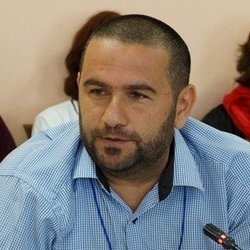‘Russian regions’ budget revenues will decrease because businesses are actively reducing’
The Russian treasury’s deficit in 2021 will be at least at 2,4%, experts think
The amount of taxes, duties and other payments to the federal budget has reduced in Russia for the first time in five years — these are the consequences of the pandemic year. Subsidies for regions designed to level the fiscal capacity have stood almost at the same level, though they annually rose by 5-6% during the previous years. Read in Realnoe Vremya’s report what reduces the regions’ economic independence.
Russian treasury falls short of money
The amount of taxes, duties and other compulsory payments in Russia’s consolidated budget has reduced to 10,67 trillion rubles for the first time in five years. Compared to the previous period, the fall has been 12,7% (versus 12,23 trillion rubles in 2019), which was quite expected during the coronacrisis.
“The budget deficit in 2021 will be as little as 2,4%. Clearly, Russian regions’ budget revenues will decrease because businesses are actively reducing. While regional budgets, first of all, consist of two key taxes: income tax and personal income tax. While these taxes are more difficult to count and collect than VAT or excises the federal budget is made of,” noted Mstislav Afanasyev, a professor and researcher of School of Politics and Governance of Faculty of Social Sciences at HSE NRU.
This is why in any case the budgets of Russia’s regions will be in a more difficult situation by default regardless of the hardships the world economy is going through, the expert is convinced.
The Far East pays the most, the Urals pays the least
The Ural Federal District hasn’t fallen short of payments the most. The reduction has totalled 30% compared to last year’s total result. In 2019, it was 4,8 trillion rubles, while 2020 ended with 3,4 trillion rubles. Moreover, the Ural Federal District always was a vanguard of payments made to the federal budget outstripping even the Central Federal District with its capital Moscow.
The Central Federal District, in turn, finished 2020 with a rise of federal payments (+12,7%) by securing 2,71 trillion rubles in the federal treasury. Moscow with 1,81 trillion (+16,7% against 2019) and Moscow Oblast 485,3 billion (+5,9% against 2019) favoured this first of all.
The coronavirus pandemic and its consequences didn’t impede the Far Eastern Federal District from increasing payments to the federal treasury. The district collected 209,9bn rubles, which is 39% more than in 2019 (151,1bn rubles in 2019. The sustainable growth of payments to the federal budget has been seen in the last five years.
The Volga Federal District was not as successful for the federal region last year as the Central Federal District and the Far Eastern Federal District and provided Russia’s budget with 1,69 trillion rubles, which is 17,3% below last year’s digit.
Tatarstan has made the biggest amount of payments to the federal budget in the Volga Federal District in the last five years. In 2020, the republic transferred 388,9bn rubles to the federal treasury, which anyway turned out to be 25,4% less than in 2019.
Samara Oblast that paid 270 billion rubles to the federal centre in 2020 ranks second in the Volga Federal District in replenishing the federal budget. However, these payments were 20,2% less than analogous payments in 2019.
We will say beforehand that these two Volga regions don’t receive subsidies from the federal centre to level the region’s fiscal capacity.
In 2020, Tatarstan gave the federal budget 66,5%, or 388,9bn rubles, of collected federal taxes and duties in total. While 585 billion rubles were collected in total, which is above the average number in the Volga Federal District (59,8%).
Only Orenburg Oblast (79,7%, or 230,6bn rubles) and the Udmurt Republic (71,7%, or 115 billion rubles) pay more than we do. We should remind you that Tatarstan pays more than others in absolute terms.
The amount of subsidies remains the same
Tax collection and payment of other duties to the federal budget rose in the last five years except for 2020, which provided a fall in the money sent back to regions in the form of subsidies. So in 2016, 7,6% of all collected money (514,6bn rubles) were allocated for subsidies. In 2019, the subsidies totalled just 5,5%. However, in 2020, the share of subsidies increased again to 6,7% amid a drop in payments.
Subsidies to equalise Russian regions’ fiscal capacity are annually adopted by federal law three years in advance. Despite a downward trend of the share allocated for subsidies, the number of subsidies in absolute terms annually grew apart from subsidies in 2021. So if 514,6bn rubles were spent in 2016 in total, in 2020, the sum was more than 717 billion rubles.
It is noteworthy that subsidies for regions in 2021 haven’t changed for the first time in five years (besides the Chukotka Autonomous District). And the total sum for all regions has amounted to 718,3bn rubles. Though when the law On Federal Budget in 2020 and Planning Period in 2021 and 2022 was adopted a year ago, 730,8 billion rubles were factored in for 2021 (not 718,3bn rubles like in federal law No. 385 as of 08.12.2020).
Mstislav Afanasyev thinks that subsidies even decreased. In his opinion, we should rather be talking about not the subsidies to level the fiscal capacity but intergovernmental transfers in general:

Talking about the possible reason why the number of subsidies for regions stopped increasing, Shakhizin Alibekov, professor of Department of Economy and Accounting in Northern Caucasian Institute of the Russian Law Academy of the Russian Ministry of Justice in Makhachkala, assumed that the pandemic might be the reason during which the fiscal policy weakens, since production goes down.
“Money goes to the budget through taxes that are formed as a result of production, which became weaker in 2020. The tax base reduced. So budget replenishment reduced too. This is why if additional subsidies are allocated... they are allocated from the reserve fund. And the reserve fund isn’t a bottomless pit.”
Ayrat Farrakhov, a State Duma deputy, member of the Duma’s Committee for Budget and Taxes, confirmed that indeed these numbers are approximately identical. But due to a very serious fall in the state’s incomes, the economy’s stagnation caused by the novel coronavirus infection, he considers that the fact that the country managed to save the number of subsidies to level fiscal capacity a great achievement:

Talking about the tendency of the last years, Ayrat Farrakhov noted a significant rise in the amount of targeted support for specific projects. In these conditions, regions either implement projects or this money cannot be used. However, according to him, these projects don’t favour the regions’ economic independence:
“We see that the number of regions that don’t receive subsidies for adjustment hasn’t increased in the last few years. What does this mean? Unfortunately, there were 13 donor regions, and this number hasn’t changed. And the rise in the regions’ targeted support doesn’t stimulate regions to develop their tax base, to have their own incomes and sometimes maybe have a destimulating effect. Donor regions such as Tatarstan find it tough enough to stay in such a situation. The government envisaged 40 billion rubles of grants for efficient and successful work, and it is very good. But it will be quite tough for donor regions that don’t receive equalisation subsidies.”
Most subsidised regions
Dagestan receives the biggest amount of subsidies in Russia, 72,9bn rubles, which exceeds the sum of payments to the federal budget more than six times. The Republic of Sakha (Yakutia) is second in the number of subsidies, which was allocated 51,6bn rubles in 2020. However, Yakutia paid 86,1bn rubles to the federal budget.
Kamchatka Krai is also in the top 3 with 41,1bn rubles to level the capacity. Moreover, only 3,1bn rubles were received from it to the federal treasury.
If we compare the Volga Federal District, the Republic of Bashkortostan receives the biggest sum of subsidies — 17,2bn rubles. Kirov Oblast and the Chuvash Republic receive a bit more than 12 billion rubles.
In Russia, there are 13 self-sufficient regions including Moscow, Moscow Oblast, Saint Petersburg, Leningrad Oblast and others.
Talking about prospects of the budget policy, Mstislav Afanasyev said that a new version of the budget code would soon be issued. It will probably increase new positive changes in favour of regions. Its readiness level is high enough:
“What will happen? Depending on the regions’ position. If they have a more active stance, the chances to defend their interests are higher. Now we are approaching the budget system of the unitarian state, not a federative one.”

Ayrat Farrakhov thinks the government should take measures to stimulate the region’s economic independence because, as the expert said, it is followed by their own decisions, expansion of the tax base and a general aspiration to budget authorities are met at their own expense.
Talking about prospects of the budget code, Ayrat Farrakhov noted that there was reached a consensus on the code and a series of consecutive changes are taking place:
“The case is that budget legislation doesn’t change completely but consecutively, by separate chapters, insertions. I think it is correct in such conditions. Improvement of intergovernmental relations is one of the key scientific and strategic problems we have today. One of the major issues is a significant growth of target subsidies, and this, of course, reduces the region’s economic independence.”